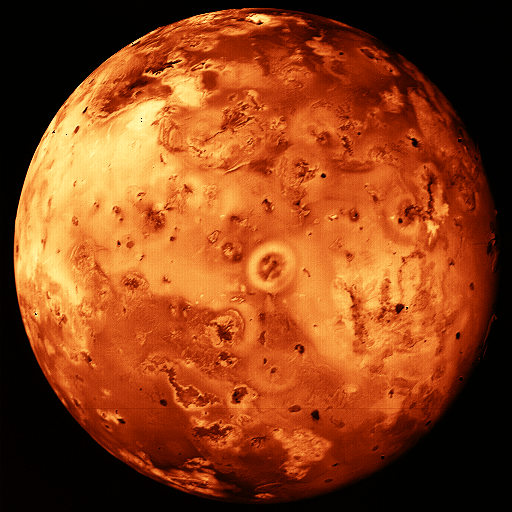![]()

Jupiter's moon Io is 778 million kilometers from the Sun. Except at its volcanic hot spots, Io's surface temperature is well below freezing. Instruments aboard the space probe Galileo measured infrared energy emitted by volcanic hot spots on the satellite's surface. Io was found to have at least 12 active volcanoes erupting lava at temperatures over 1200 degrees Celsius. Scientists believe that lava at one of the sites reaches a temperature of over 1700 degrees Celsius. This temperature is approximately 3 times the hottest surface temperature on Mercury, the planet closest to the Sun. Two of Jupiter's satellites, Europa and Ganymede, pull Io into an elliptical orbit around Jupiter. Differences in the strength of Jupiter's gravitational pull as the distance between the planet and Io varies causes slight changes in Io's shape. Scientists believe that Io heats up internally when it changes shape. Io releases this inner heat in volcanic eruptions.
![]()
| Show me the Level 1 version of this page. |
The StarChild site is a service of the High Energy Astrophysics Science Archive Research Center (HEASARC), within the Astrophysics Science Division (ASD) at NASA/ GSFC.
StarChild Authors: The StarChild Team
StarChild Graphics & Music: Acknowledgments
StarChild Project Leader: Dr. Laura A.
Whitlock
Curator:
Responsible NASA Official: